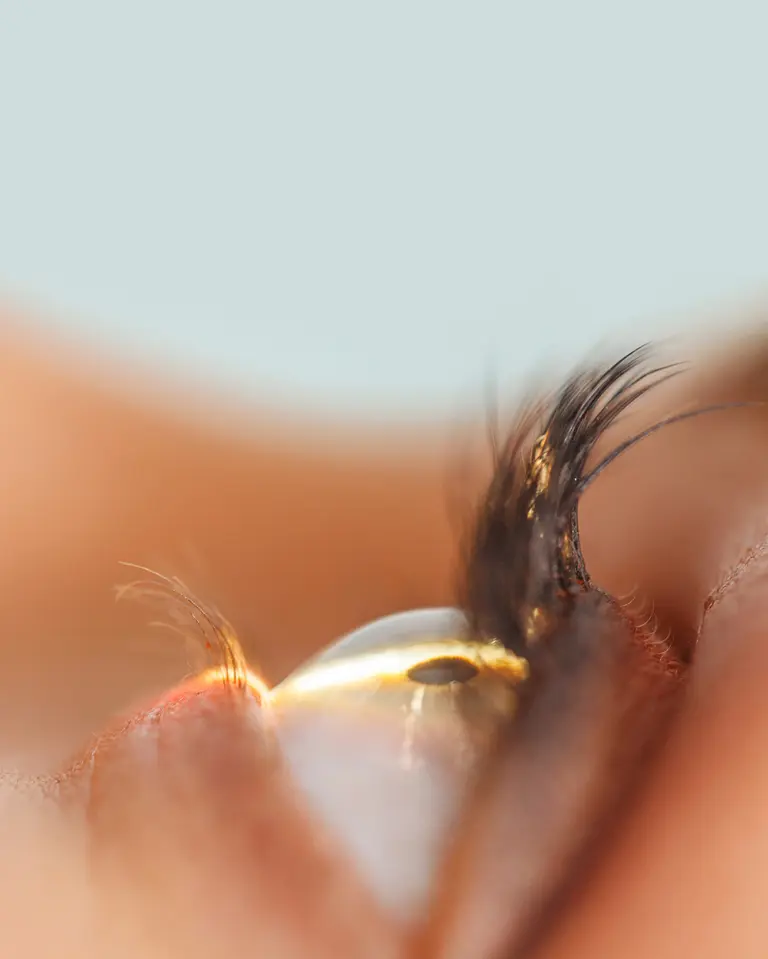What to expect during the iLink®️ cross-linking procedure
From the day of the procedure to your recovery, here’s what you need to know.

A closer look at the
iLink procedure
Most likely a technician will set up the iLink corneal cross-linking procedure and assist your doctor.
You will be awake and alert during the procedure but given relaxing medication as well as numbing eyedrops. Most patients report only light pressure during iLink.
After the relaxing medication and numbing eyedrops, the thin layer on the surface of your cornea, called the epithelium, will be gently removed. This helps prepare your eye so that the Photrexa®️ Viscous (riboflavin 5’-phosphate in 20% dextran ophthalmic solution) and Photrexa®️ (riboflavin 5’-phosphate ophthalmic solution) can penetrate the tissue of the cornea to have an effective iLink procedure.
Next, Photrexa® Viscous eyedrops will be placed in your eye for at least 30 minutes. Depending on the thickness of your cornea, Photrexa® drops may also be required. The cornea is then exposed to ultraviolet light for another 30 minutes while additional Photrexa® Viscous drops are applied.

Watch WiseEyes – Preparing for & what to expect during iLink®
Find out how to prepare for and what you can expect in the days leading up to your procedure, the day of your procedure, and immediately after your procedure.
How long the treatment takes
The actual procedure takes about an hour, but you should plan to be at the office for about 2 hours in total to allow sufficient time for preparation and post procedure evaluation before you return to the comfort of your own home.
How the procedure feels
You may experience some discomfort in the treated eye in addition to some sensitivity to light following the procedure.
What you’ll experience during the procedure
You will be awake and alert during the procedure. You will be given numbing eye drops and may also be given relaxing medication. Most patients report that they don’t feel any discomfort.
What to do following your cross-linking procedure
Rest up
Avoid rubbing your eyes
Manage your pain
Avoid light
Be patient while your eye heals
When to contact your doctor
If you experience severe pain in the eye or any sudden decrease in vision, you should contact your eye doctor immediately.
If your bandage contact lens from the day of treatment falls out or becomes dislodged, you should not replace it and should instead contact your doctor immediately.
Ulcerative keratitis, a potentially serious eye infection, can occur after treatment in rare instances. Your doctor should monitor defects in the outermost corneal layer of the eye for resolution. The most common ocular side effect to occur is haze.
For the full list of potential side effects, see Prescribing Info
Watch WiseEyes – What to expect after iLink®
Check out an audience Q & A segment to help you understand what you can expect after your iLink procedure.
Want to know what questions to ask your doctor about iLink?
After each iLink procedure, the eye doctor will:
Monitor each person’s recovery
Manage vision and eye health
Check for prescription changes
iLink may change the shape of the cornea.
iLink through the eyes of a person with KC
Bekah was diagnosed with keratoconus when she was 36 years old, after she failed her vision exam at the DMV. Like others who are diagnosed with this disease, Bekah didn’t know anyone who was living with keratoconus. She researched keratoconus and potential treatments online and after talking with her doctor, she ultimately decided on the iLink cross-linking procedure.
In this video series, Bekah covers her experience, from nervous preparations leading up to her procedure day through her recovery period.
Pre-procedure
Part 1 of 2
Pre-procedure
Part 2 of 2
Day after procedure
48 hours post procedure
5 days post procedure
10 days post procedure
Individual results are not guaranteed and may vary.